Introduction
Amazon Web Services (AWS) is without a doubt a strong contender if you’re looking for a cloud computing platform. AWS is renowned for its simplicity of use and extensive feature set, both of which make it the perfect platform for companies of all sizes. It enables customers to utilise a range of networking, storage, and computing services from any location in the world.
However, you are in charge of safeguarding and securing your data, as stated in the AWS Shared Responsibility Model.
BDRSuite with its more than a decade and half experience in the data protection domain offers a simple, secure, and cloud-native AWS backup software for your AWS EC2 instances. You can recover your backed up instance, volume, or even files at any time with near-zero RTO.
How does BDRSuite for AWS Works?
By using Amazon APIs to handle snapshots, BDRSuite for AWS offers agentless AWS EC2 backup and restorations. You can schedule backups of the instances operating in the same account or in any other AWS Account.
All snapshots (restore points) of the target instances will be saved in the same account from which they were backed up. When you need to restore an instance or multiple instances from a specific restore point, you can instantly recover and launch the required instances in the same account.
What key features does the BDRSuite Free Edition for AWS Offer?
- Backup up to 10 AWS EC2 Instances for free, with no feature limitations
- Cloud-Native Backup – BDRSuite for AWS backups your EC2 instances using AWS APIs. This means that no agent is required to be installed in the target instances in order to perform backups
- Backup EC2 instances from any account – Add your target AWS account and backup instances from any region that account has access to. Using search operations, the list of instances can be filtered by OS type, instance type, and availability zone
- Automatic Backup Scheduling – Set up an AWS backup schedule that will automatically backup your instances, ensuring near-continuous data protection
- Application-Aware Processing – Get backups that are application-consistent for Microsoft applications such as MS Exchange Server and MS SQL. BDRSuite for AWS ensures that backups are only performed when the application writers are stable and a transaction-consistent snapshot is guaranteed
- Pre/Post Backup Scripts – Run custom scripts in the form of batch files before and after each backup job to prepare the applications for backup mode before the backup begins and to revert after the backup is complete
- Instant Restore – Restore AWS backup instances or volumes to the same AWS account with a near-zero recovery time objective
How to perform AWS EC2 instance backup using the BDRSuite Backup server?
Step 1: Download and Install BDRSuite Backup Server. Please see the installation guidelines here.
Step 2: Log in to the BDRSuite Backup Server and navigate to the Tab: AWS
Step 3: Add AWS Account: Navigate to Data Sources -> Add AWS Accounts page.
You can add AWS Accounts by providing the Access Key ID and Secret Access Key details. You can get these details by creating a policy and assigning it to an AWS Account user.
For more information on this, see the Prerequisites section
Step 4: Backup Configuration: Navigate to Backup -> Configure Backup page.
1. Basic Job Details – Enter basic details such as a suitable job name and description to create a backup job.
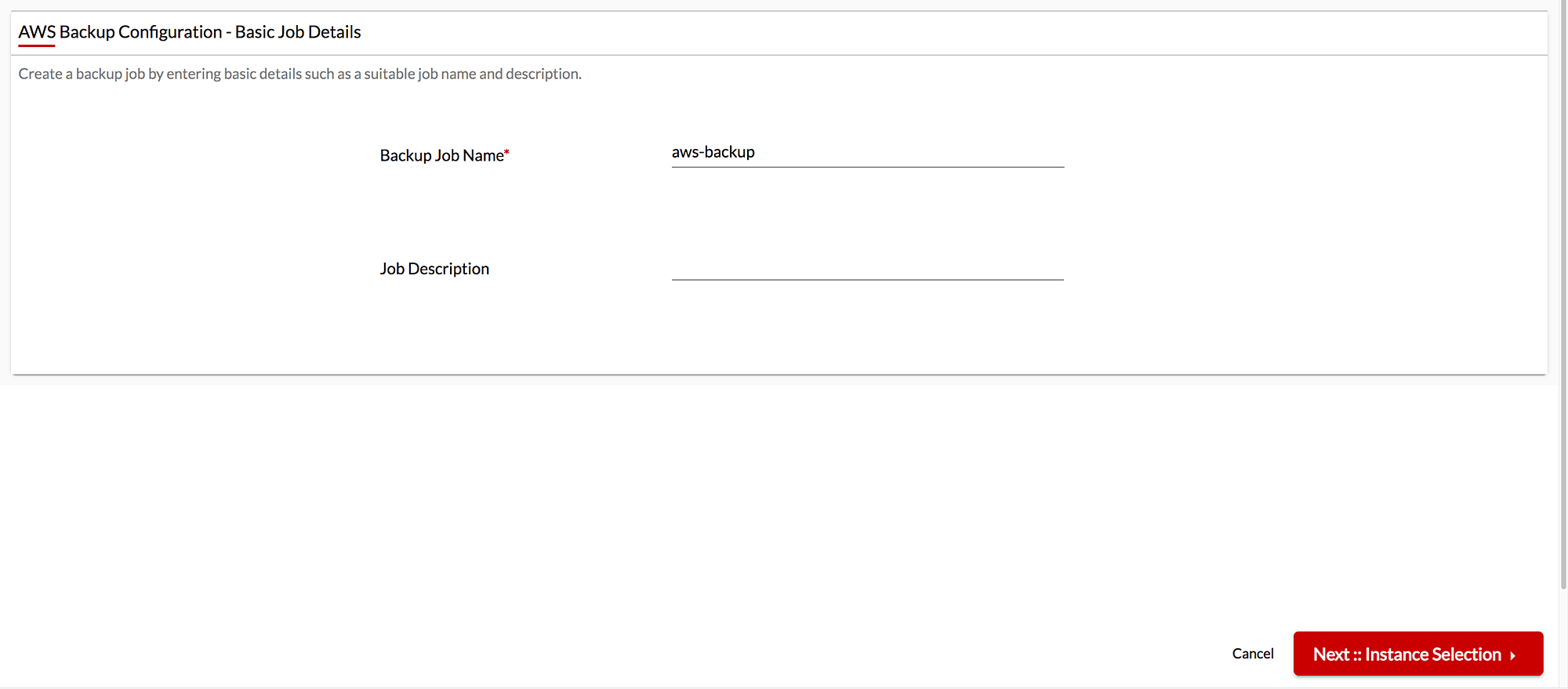
2. Instance Selection – Select the AWS Account, Region, and then select the Instances for backup. Using search operations, the list of instances can be filtered by OS type, instance type, instance status and availability zone. You can also enable advanced options such as application-aware processing and run Pre/Post scripts.
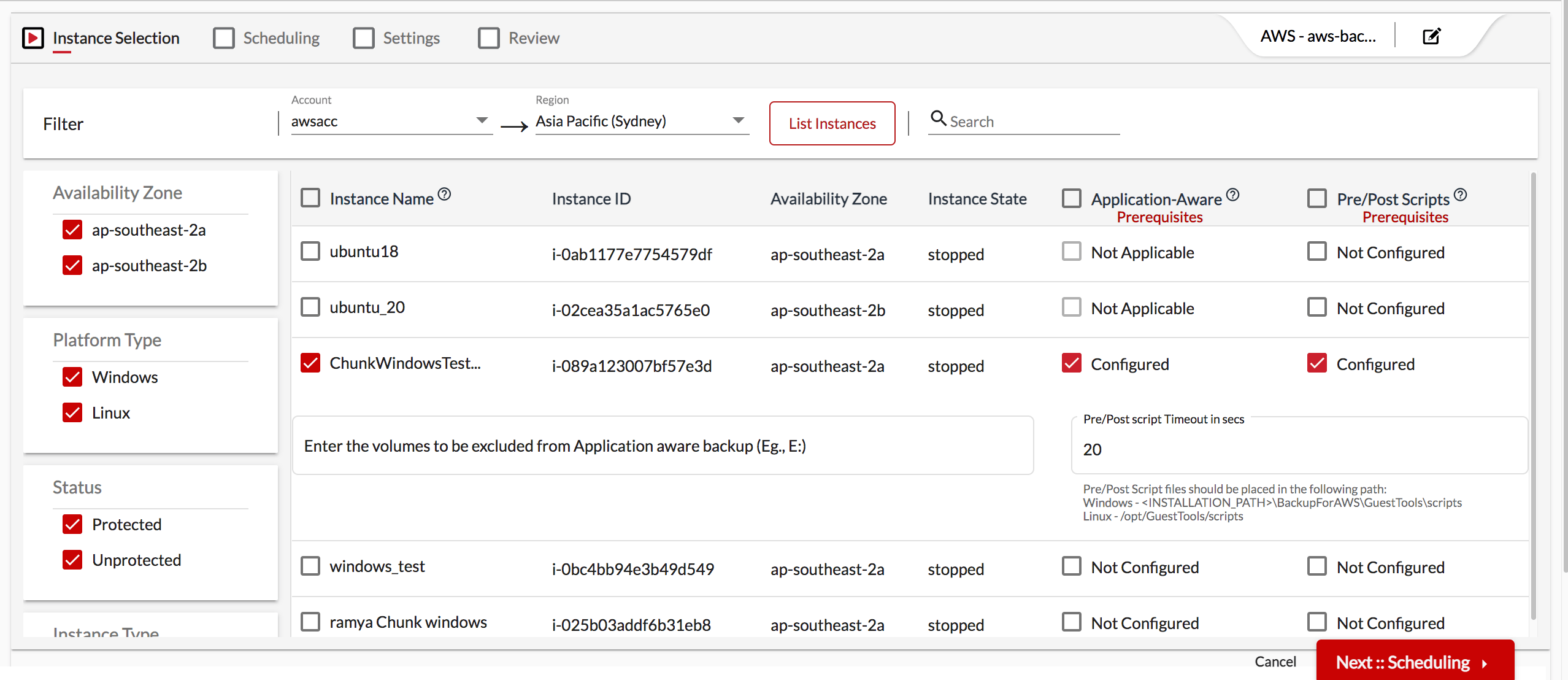
3. Scheduling – In the Scheduling section, you have the option to choose how often you want to backup data Every 15 mins or on an hourly, daily or weekly basis. You can configure the number of retry attempts for failed schedule and the wait time before each retry attempt.
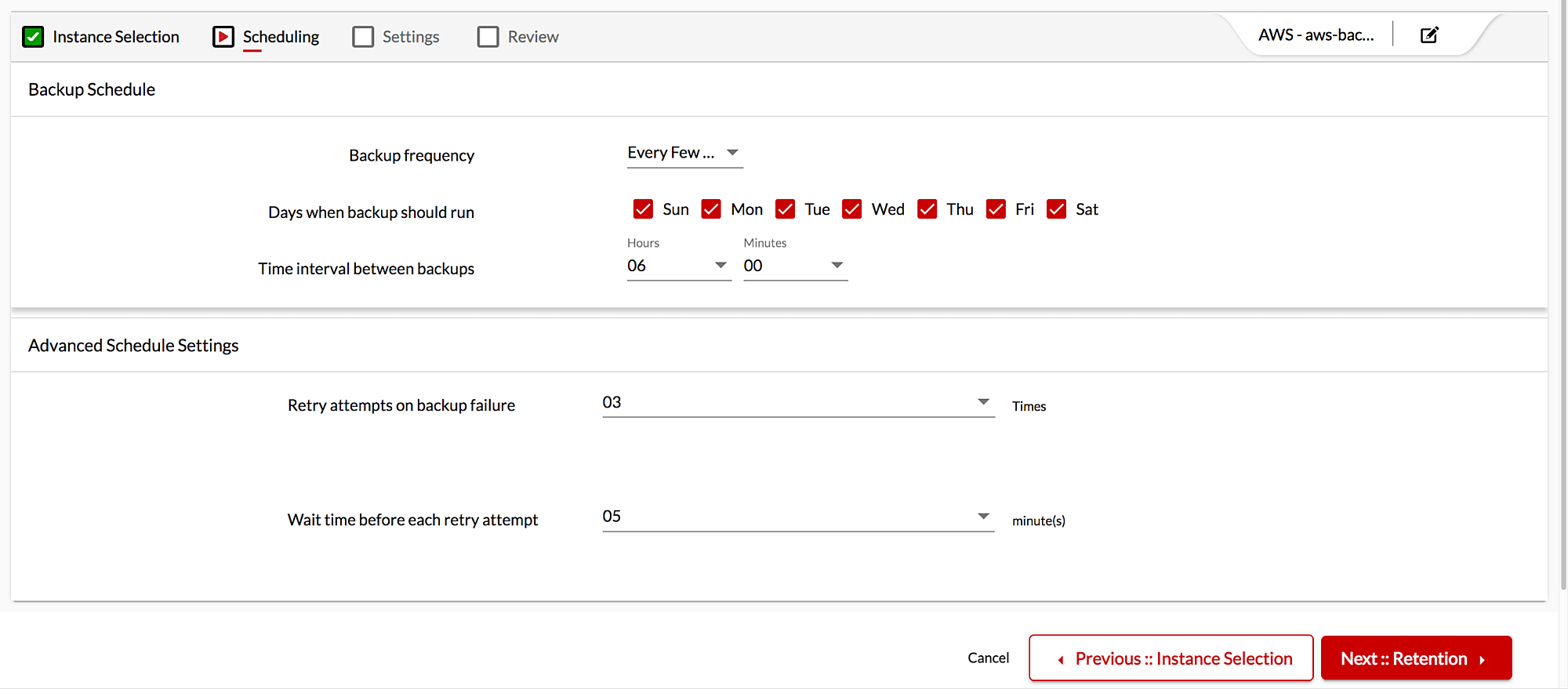
4. Settings – Choose the number of snapshots to be retained for the backed-up instances.
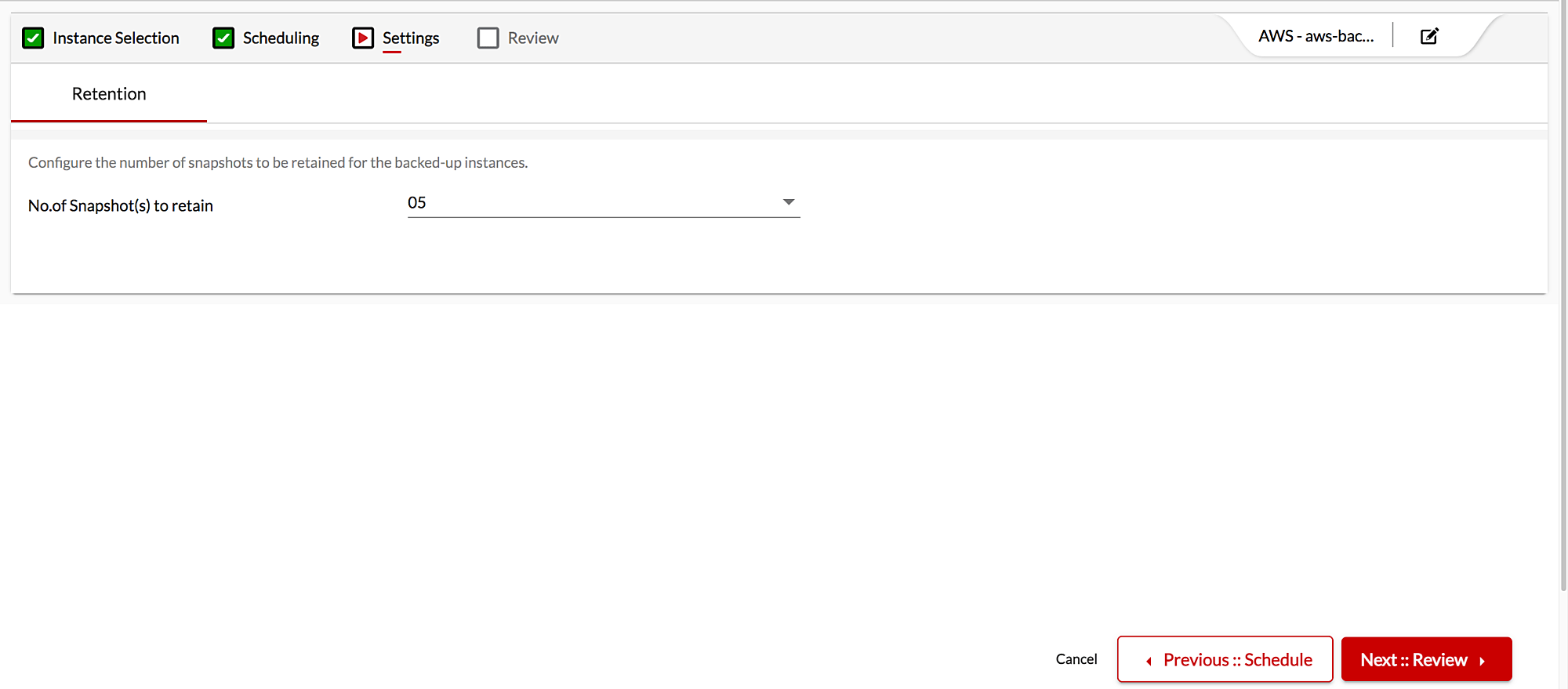
5. Review – Finally, save the job after reviewing the backup configuration. The job will begin to run according to the backup schedule.
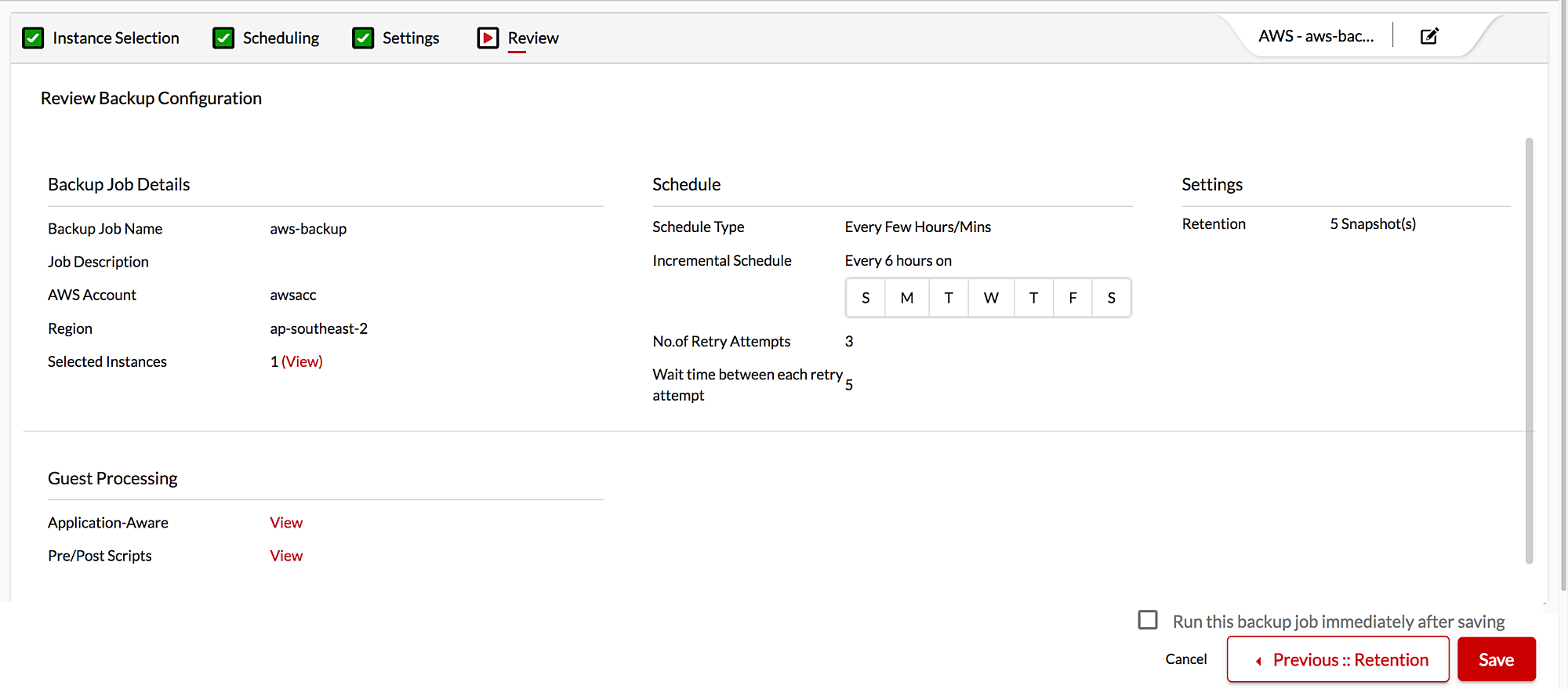
What kind of recovery options does BDRSuite for AWS offer?
BDRSuite Backup for AWS lets you restore backup data from your EC2 instances using one of two recovery methods:
1. Instance Recovery:
Instance Recovery allows you to recover the entire backed-up instance, including all volumes, instance configuration, and user data. You can also configure the EBS volumes of the backed-up instances for restore in terms of Type, Capacity, and Device.
BDRSuite for AWS creates and registers a new AMI image from the snapshot, i.e., the selected restore point, when performing Instance Recovery. This is the image that is used to launch the Recovery Instance. After recovery, you can choose whether to deregister the AMI image or keep it for future use.
2. Volume Recovery:
Instead of restoring the entire instance every time you want to perform recovery, you can recover volumes from backed-up instances and attach them to the same instances.
You Select one of the following Attach Behaviours to be followed during volume recovery:
1. Attach the restored volume only if the Device is available – The volume will be attached only if the target device is available.
2. Replace the existing volume with the restored volume while keeping the existing volume – If the target device is selected, the attached volume will be replaced with the recovery volume. The previous volume will be detached but not deleted.
3. Delete the existing volume and replace it with the restored volume – The recovery volume will be attached to the device, and the previously attached volume will be deleted.
How to Recover the Backed-up AWS EC2 Instances with BDRSuite?
Step 1: Navigate to Recovery and select whether to perform recovery at the Backup Job or EC2 Instance level by clicking on the corresponding option.
Step 2: Click the Restore button to begin the recovery process.
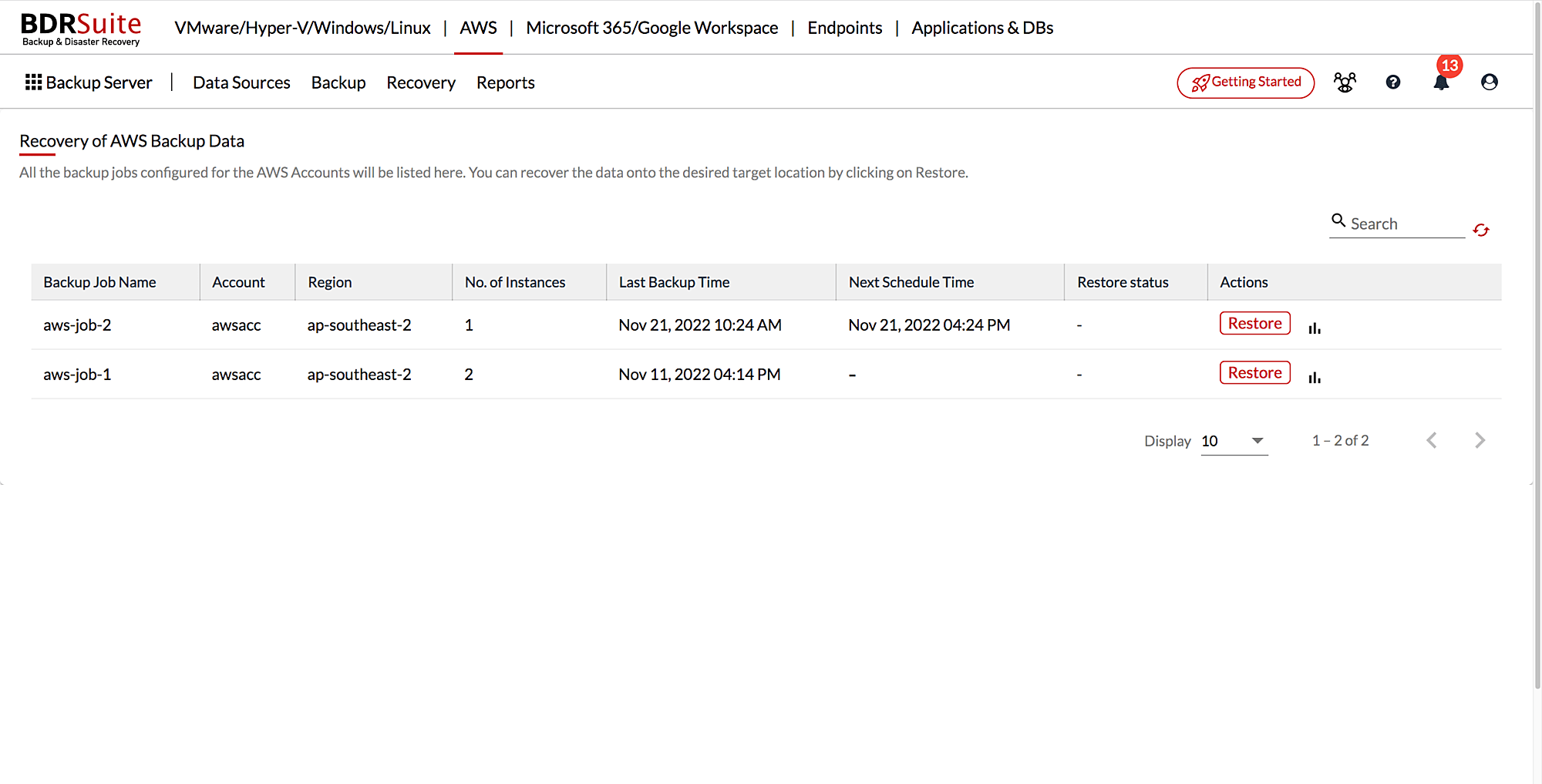
Step 3: Select the EC2 instance to be recovered and the restore type. Here, I’m choosing Instance Recovery option.
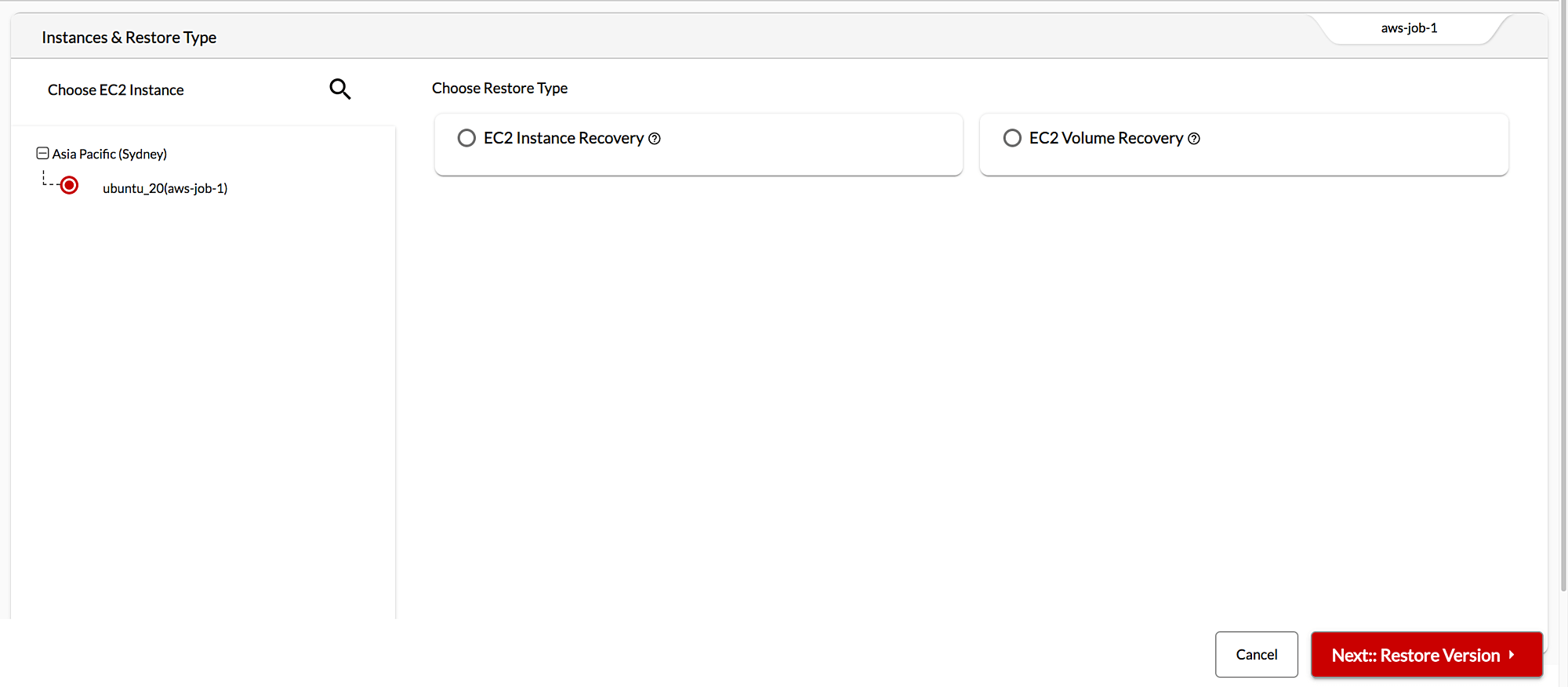
Step 4: Select the restore point for which you want to perform the restoration.
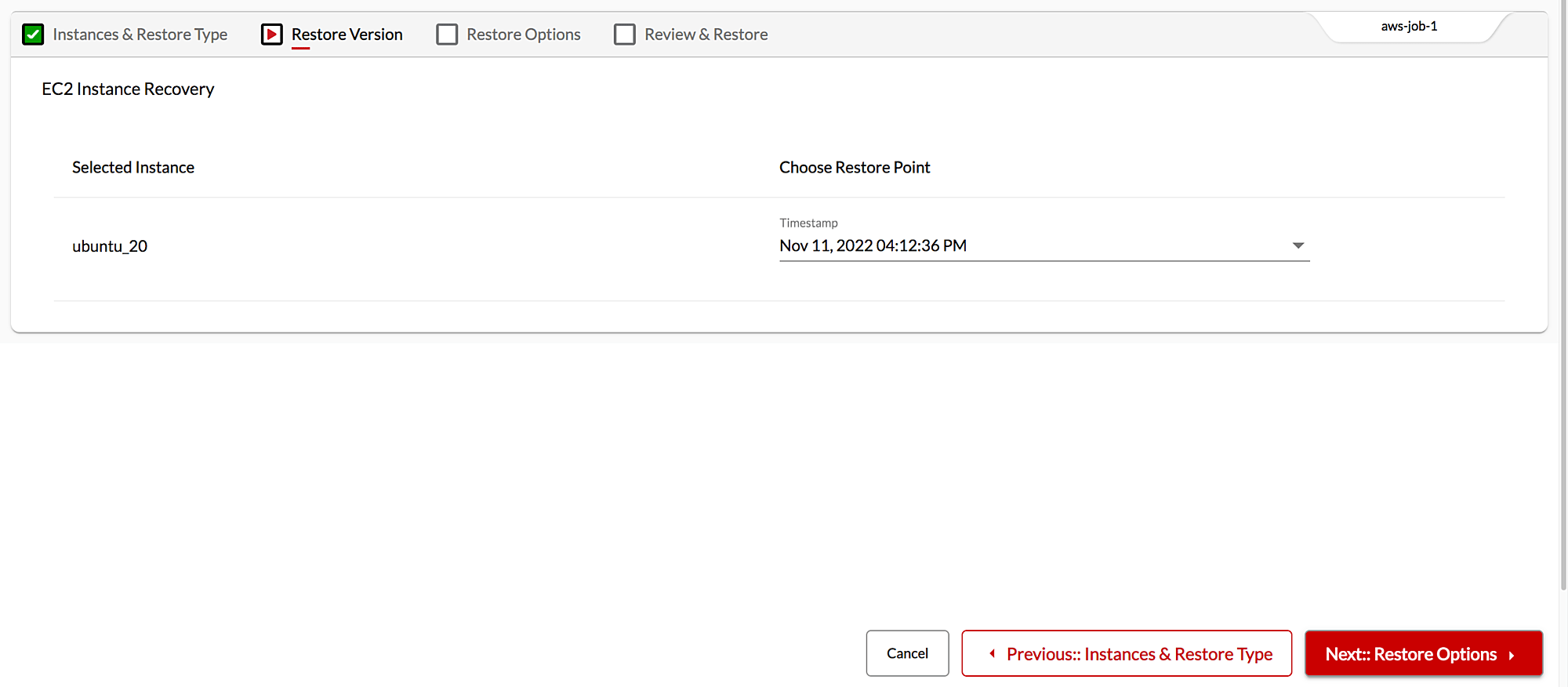
Step 5: Choose the recovery configurations based on the type of restore.
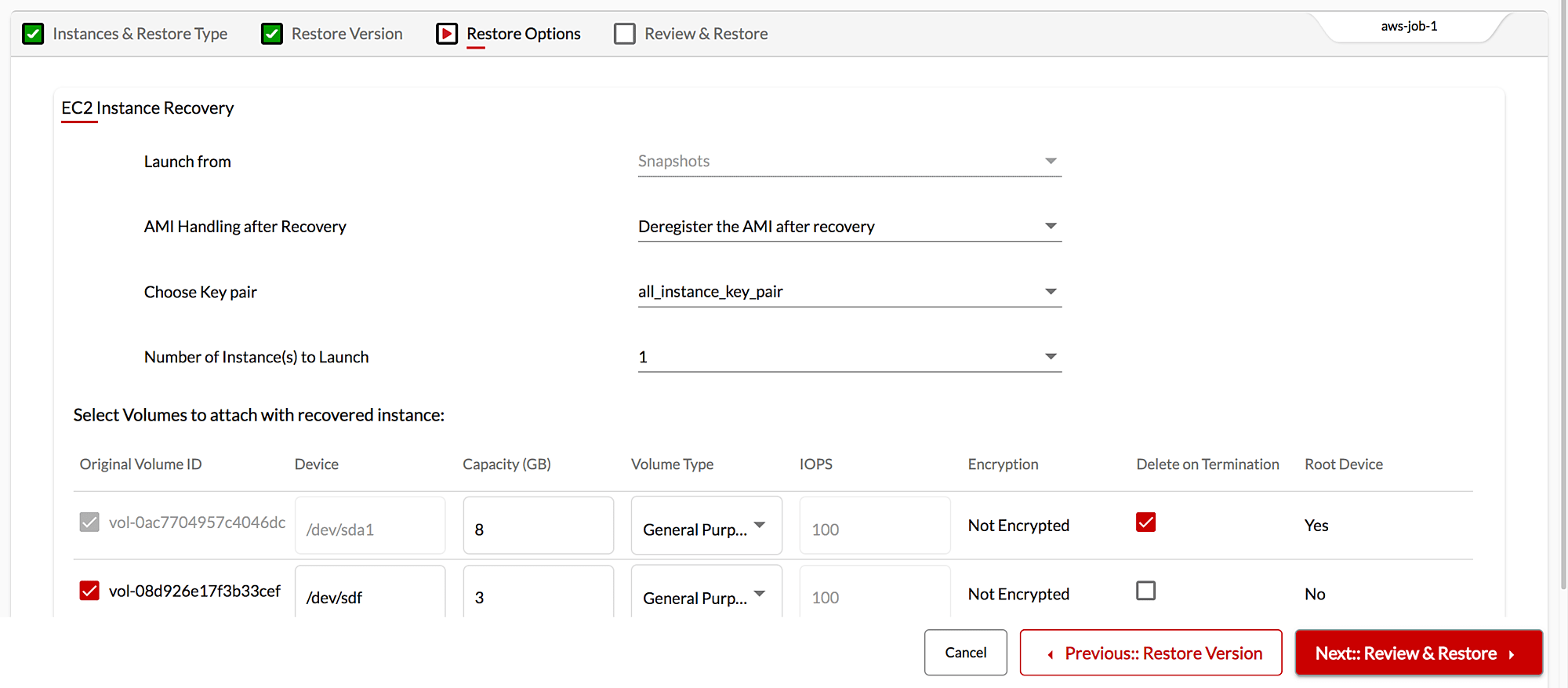
Step 6: Finally, review the configuration and start the restore.
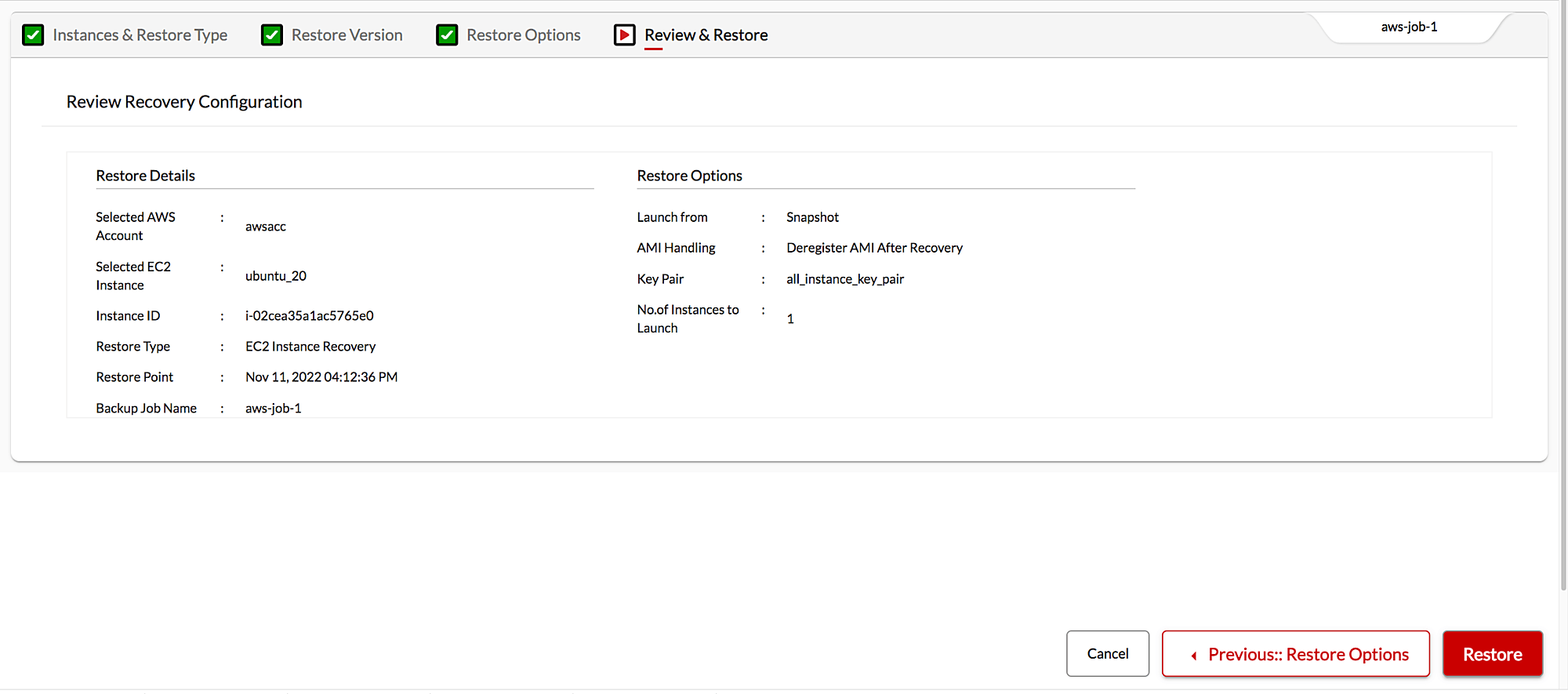
Be sure to download and explore BDRSuite in your environment with our fully-functional 30-day free trial version
Follow our Twitter and Facebook feeds for new releases, updates, insightful posts and more.



Leave A Comment